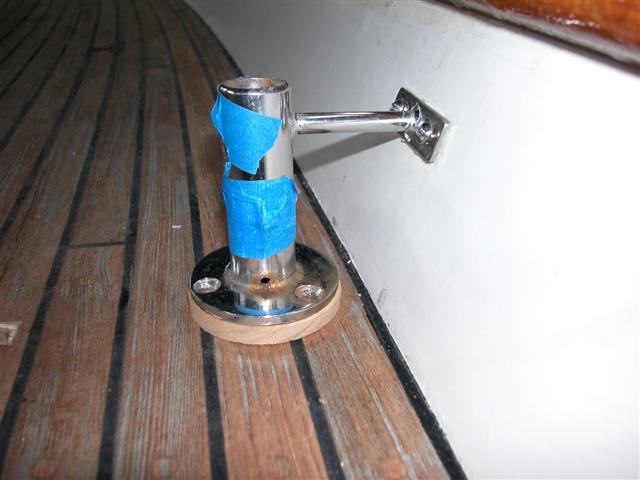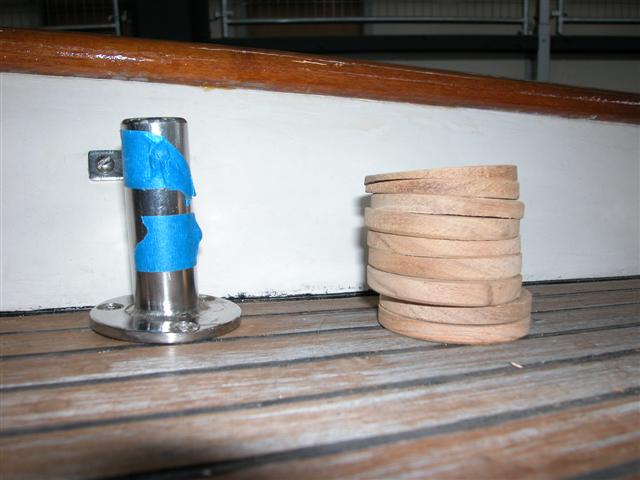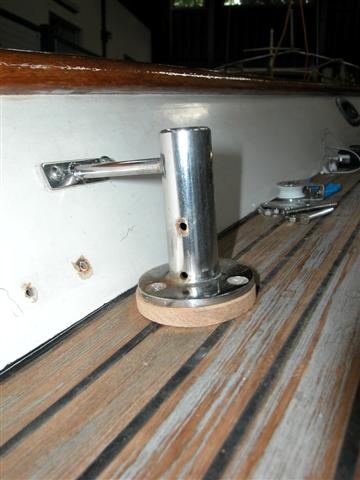Stanchion Base Pads
Our teak decks did not appear to have been sanded before. Under the stanchion bases, tracks, cleats, and other deck fittings the teak was considerably higher than in open spaces subject to normal wear. When I sanded the decks, these high spots were sanded level with the rest of the deck. This caused the teak pads under the stanchion bases to be too thin.
The old stanchion pads were much wider than the stanchion bases and left little clearance between the bases and the sides of the bulwarks, contributing to the collection of dirt and debris.
The new pads were cut from solid teak with a hole saw slightly larger than the stanchion bases. Each stanchion base was then held in place by screws through the bulwark support. We then measured both the high and low dimension between the stanchion base and the deck and marked these on the new teak pads, allowing an eighth of an inch for sealant..
A belt sander was used to angle the teak pads.

The smaller pads allow easier water flow along the bulwarks.

Good thing we marked the pads or we never would have figured out which one went where...

After finding the correct orientation each pad was drilled and then sealed to the deck with TDS SIS 440. The stanchion bases were sealed to the pads with 3M 101.